I'd never heard of Healwell before and took a look over their offerings. Has anyone used the products? Beyond the…
Monday Morning Update 9/16/13
From Thinking UGMs: “Re: user group meetings. Our company is getting large enough to be considering holding our first user group meeting. Do you have ideas?” It’s a great question – quite a few companies are getting big enough to consider throwing a UGM. Let’s crowdsource the idea – take the survey I created and I’ll collect and publish all the ideas right here on HIStalk. What factors would help make a company’s first user group meeting successful?
From Neutron Jack: “Re: HealtheWay. It’s supposed to be the national backbone for clinical data traffic, but maybe it’s not ready for prime time production.” A reader forwarded an email detailing abysmal technical support from the public-private collaborative that supports the eHealth Exchange, formerly the ONC-run program known as Nationwide Health Information Network Exchange (NwHIN, although technically it should have been NwHINE). A simple support ticket didn’t get a response for a week despite three requests and an email to the CEO.
From Keeping the News: “Re: MEA/NEA. Did you see the company that Lindy Benton runs has been acquired by Accel-KKR? MEA has grown with their esMD participation. This could take the company to the next level.” Lower middle market private equity firm Accel-KKR takes a majority position in EA Holdings, which owns National Electronic Attachment (NEA) and Medical Electronic Attachment (MEA). The companies offer a platform for the electronic exchange of medical and dental claims attachments.
From The PACS Designer: “Re: Big data. Recent comments on HIStalk about big data deserve a response. TPD never uses big data in early conversations with customers since it is so vague and can falsely represent giving data viewers valuable information about their practices. For big data to add the value proposition, you need to transform your data through vendor partnerships so the greatest gain in value can be achieved. Only when you impress intended users can the real value be realized for storage of big data.”
From Informatics Professor: “Re: HIPAA Omnibus webinar. Best information I have gotten on the topic. As always, HIStalk is the best source of info on anything related to HIT.” Thanks for those nice words, and thanks to Rebecca Fayed and Eric Banks of The Advisory Board Company for doing their presentation pro bono for HIStalk’s readers.
Health Catalyst will present “Predictive Analytics: It’s the Intervention That Matters” on Tuesday, September 24 from 1:00 to 2:30 p.m. EDT. It’s a great topic: predictive analytics aren’t worth much if an organization doesn’t have the culture and process to intervene effectively to help the patient. Presenters will be Dale Sanders (SVP) and David Crockett, PhD (senior director of research and predictive analytics). Both are amply credentialed to speak on the topic — Dale’s been a CIO and data architect, while David is a PhD in biomedical informatics and pathology expert. I’ve signed up.
Thanks to the following companies, new and renewing, that recently supported HIStalk, HIStalk Practice, and HIStalk Connect. Click a logo for more information.
I’ve had two recent needs met by one free (for personal use) software tool: TeamViewer. It’s really cool for remoting into someone’s PC to fix problems and also for transferring files from their PC to yours. I leave my desktop PC on all the time and Dropbox is good if you know in advance what files you might on other devices (like a laptop or phone), but TeamViewer allows navigating the entire hard drive in a password-protected session. It can also be used like GoToMeeting to run desktop sharing, as in online meetings and training.
Welcome to new HIStalk Platinum Sponsor MedData and its company MedDirect. The Brecksville, OH-based MedDirect provides reimbursement for outstanding patient balances while improving the patient experience. Utilizing proven patient segmentation and outreach strategies that educate, engage and communicate with patients in a way that drives results, MedDirect ensures that patients are treated with dignity and respect, exceeding patient expectations throughout every interaction. MedDirect services include innovative solutions for outstanding patient balances, patient satisfaction services, appointment scheduling and reminders, registration Point of Service payment portal, and patient billing. Thanks to MedDirect for supporting HIStalk.

Former Merge Healthcare CEO Jeff Surges will be named Monday as board chair of population health management systems vendor Strategic Health Services. Co-founder Tasso Coin will continue as a director.
GetWellNetwork will on Monday announce that Karen Drenkard, PhD, RN (American Nurses Credentialing Center) will join the company as chief clinical/nursing officer.
Medical provider database vendor Enclarity is acquired by LexisNexis Risk Solutions, joining previous acquisitions MEDai (analytics) and EDIWatch (fraud detection technology).
Texas Health Presbyterian Hospital Rockwall is implementing patient engagement technology from Emmi Solutions.
Thousands of Epic users are in Verona, WI this week for UGM. Madison-based Vonlay provides a user guide for attendees that includes useful tips, such as how to get to a local brewery using the hotel shuttles and where to rent bikes.
It’s only slightly HIT-related, but fun. Jeff Travis, a biomedical engineer who developed the database architecture of the Premise Patient Flow solution years ago, is now a filmmaker. Dragon Day, his first feature-length film, will premiere in theaters on November 1. It’s an ingenious plotline and looks like a fun watch if you like doomsday thrillers (and I do).
A Covisint-Porter Research study to be released Monday finds that provider executives are comfortable with the concept of cloud computing. Also: a third of respondents say their EHRs lack population health management capabilities and accountable care is on the radar or providers but isn’t a reality for them yet. The fact that jumped out at me is that most providers are still getting most of their inbound information by fax. Healthcare: the retirement home for 1980s technology.
The Congressional Budget Office says that replacing Medicare’s sustainable growth rate (SGR) reimbursement formula will cost $175 billion of your taxpayer dollars. CBO also found that very few Medicare demonstration projects actually reduced Medicare spending.
The local paper profiles Mary Carroll Ford, SVP/CIO of Lakeland Regional Medical Center (FL), although it manages to misspell her name in its headline.
Allscripts CFO Rick Poulton, responding to a Chicago business paper’s dismissal of the company as a poor example for the city’s healthcare IT sector, says Allscripts is recovering from “a lot of self-inflicted wounds in 2011 and 2012” but concludes that, “We may not be as pretty as we could be, but we’re not a rehabilitation case.” Poulton blames the company’s problems on its 2010 merger with Eclipsys. He says Allscripts is still trying to integrate its hospital and ambulatory systems to compete with Epic’s “one patient, one record” architecture. Poulton has been with the company for less than a year.
The respective investment firms of former Allscripts CEO Glen Tullman and Chicago entrepreneur Brad Keywell form Zest Health, which will offer mobile apps that include Talk to Me (mobile phone access to clinicians), Schedule Me (booking medical appointments) Inform Me (patient education), and Track Me (a personal health record). Tullman’s company includes former Allscripts President Lee Shapiro. Zest Health’s CEO is Karen Ferrell, former CEO of Apollo Health Street.
Weird News Andy calls this Migration Malfunction. Patients of a Tacoma, WA non-profit breast center find that their electronic medical records contain information from other patients after a system conversion going back to September 2012. A medical record number glitch caused problems, especially with scanned documents, in converting to the center’s radiology information system. The patient who complained to the state found that her 900-page chart contained 141 pages of information that wasn’t hers.
WNA also likes this item, which he clarifies isn’t about chastity belts, but rather security “breaches.” An employee of Minnesota’s new health insurance exchange releases the confidential information – including Social Security numbers – of 2,400 insurance agents by accidentally sending the file to an insurance broker’s office.
Vince’s HIS-tory of Cerner Part 5 covers HNA and acquisitions.
Contacts
Mr. H, Inga, Dr. Jayne, Dr. Gregg, Lt. Dan, Dr. Travis.
More news: HIStalk Practice, HIStalk Connect.


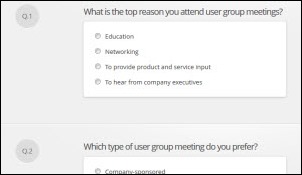
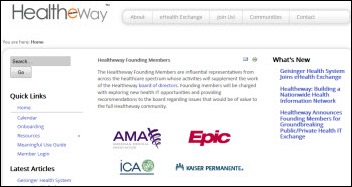
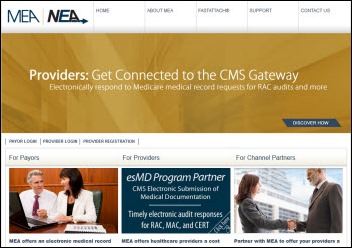

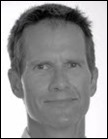
















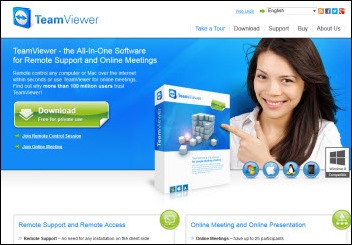
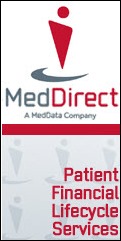
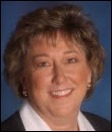
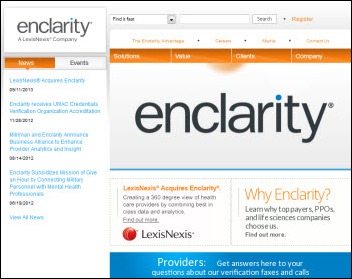

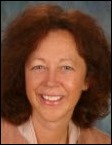
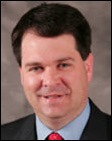
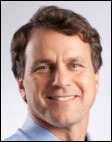
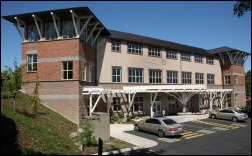

I can’t help but notice that some very well-known and larger software vendors are NOT sponsors of HISTalk. What up with that? What are some of the reasons you’ve heard why a vendor would not support your efforts? Just curious.
Big data. Not so much for our medical group partners. Typically the GL is not set properly to match revenue and expense while many also don’t have much mores than multiple versions of Crimson partially installed. You have to bring the data down to the provider level to have any clue. Don’t get me started on how weak APP data is.
Contrast the EHR conversion mess at the breast center in Tacoma to the risk created by a stolen unencrypted laptop. I would argue the Tacoma situation is a 1,000 times more egregious. Not only is PHI inappropriately disclosed, but patients are at risk.
Big data is only as useful as the underlying components. I would argue that data acquisition, mining, warehousing, cleansing, preparation, and consolidation along with strong exploratory analysis by a statistician will be far more revealing than simply plotting bars on a chart. This is where I think IT, data scientists and clinicians all need to come together to understand the big picture in order to produce something that is actionable.
I will ask for the 456th time, why everyone thinks Allscripts does not have an integrated record? Their Sunrise Clinical Manager product has a very usable, stable Sunrise Ambulatory application that sits on the same database as SCM. Combined with Sunrise ED, they have an integrated platform for 3/4 of the needed platform data.
It is only the Enterprise EHR and Pro EHR pre-Eclipsys ambulatory products that are not “integrated”. And if there was never a merger, no one would care about this.With dbMotion, you can “integrate” anything by allowing actionable data to be viewable to each of the disparate EMRs.
We regret that a customer had a negative experience with Healtheway technical support. While we commit to responding to issues within 1-3 business days, this customer’s issue did, in fact, take 5 business days to resolve. After reviewing response times for all technical support tickets, we validated that this was an isolated instance. Healtheway’s overall response times for resolving this technical support requests is actually quite good – 99.5% within the promised response times, and often within hours of the request. Customer satisfaction for technical support requests is also strong (4.7 out of 5 – where 5 is extremely satisfied). Healtheway’s CEO, once notified, responded to the customer within 1 hour of notification. An updated technical support status provided an hour later, with the matter resolved by close of business that same day. While this particular customer appears to be an outlier, we take the feedback to heart. We will continue to evaluate, monitor and improve our support over time; and, we appreciate feedback (good or bad) to assure we continue on the path of enabling scalable, trusted and reliable nationwide HIE. Thank you.
I hear that Mary Carol Ford has left Lakeland Regional Medical Center